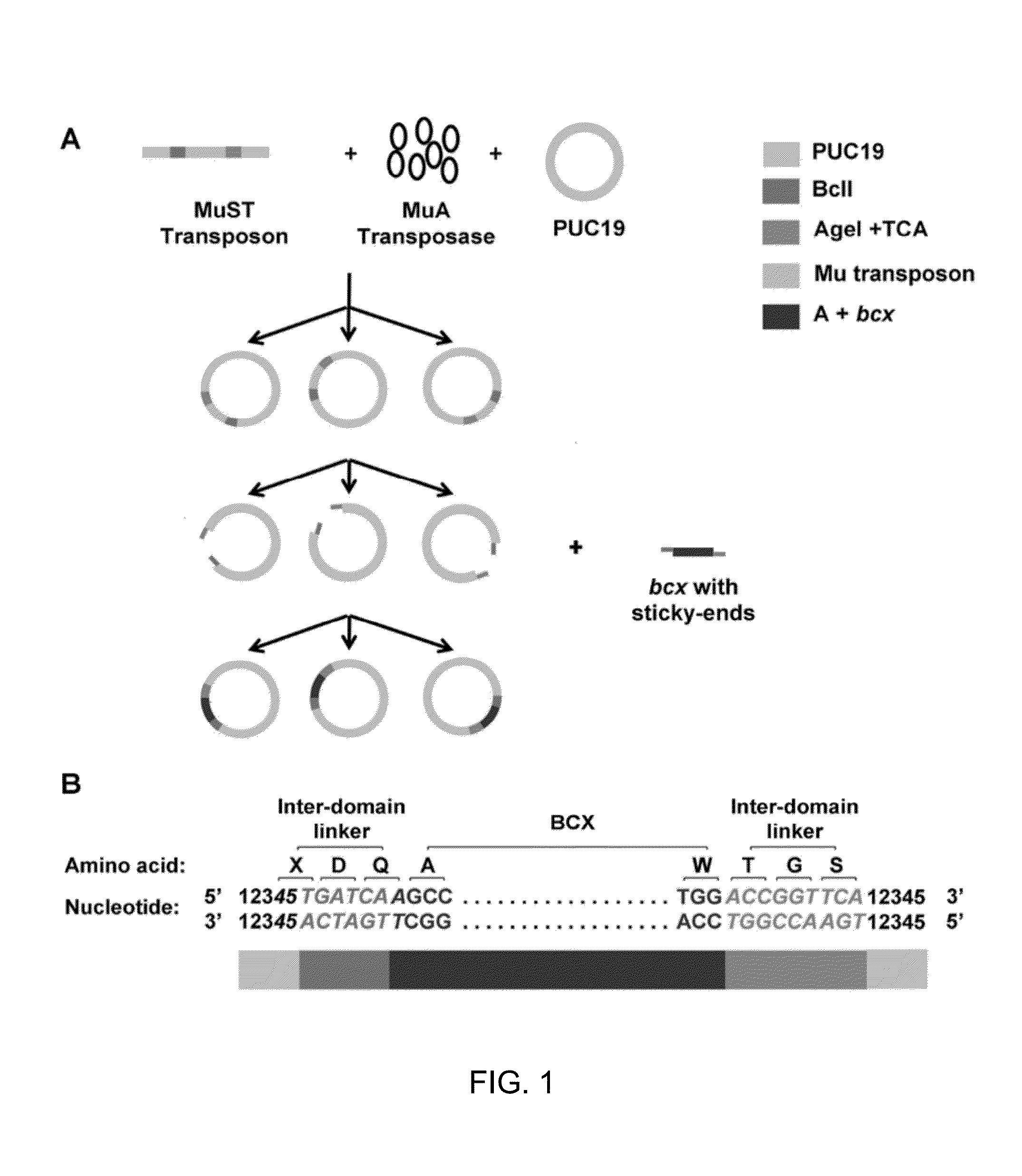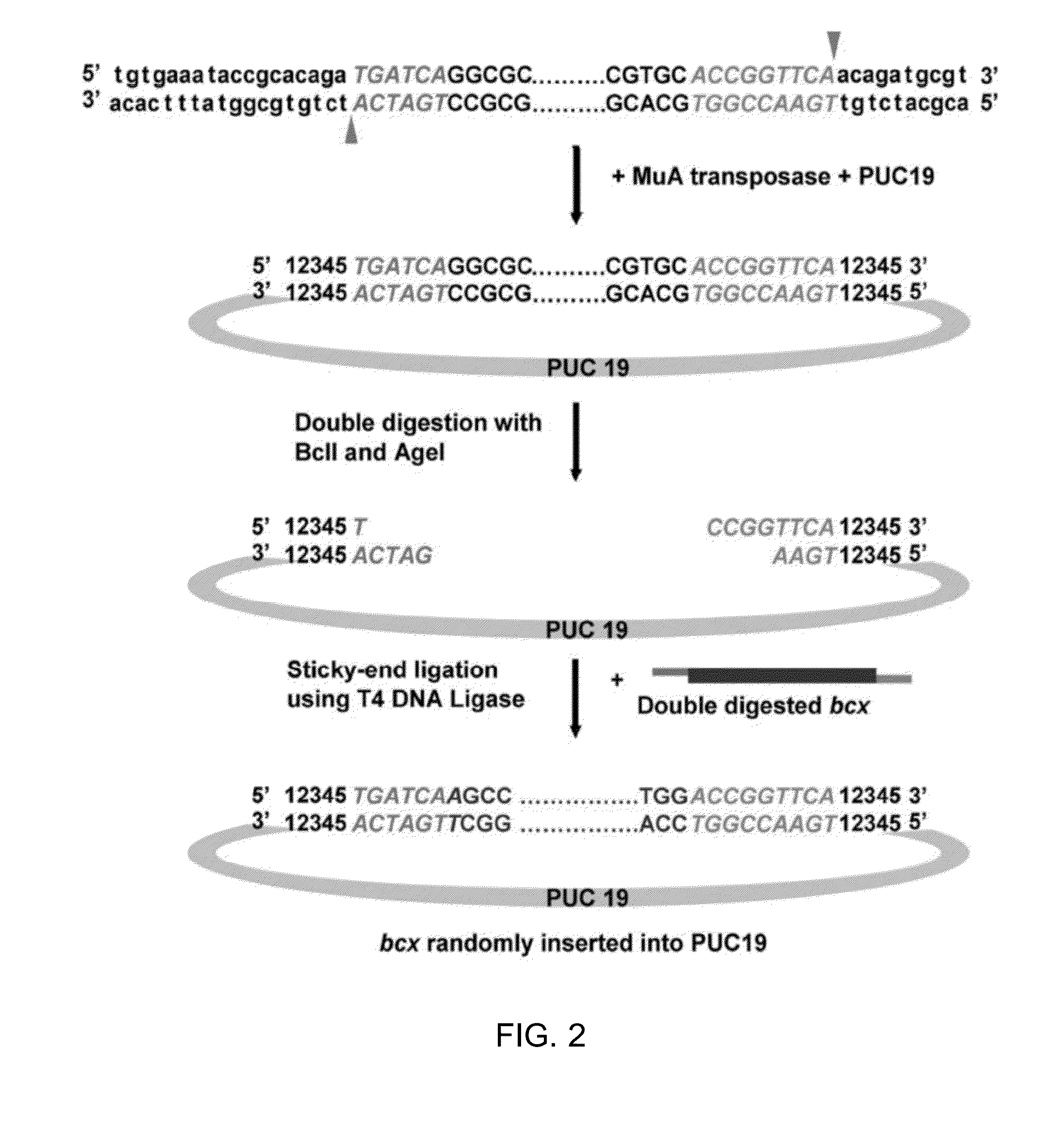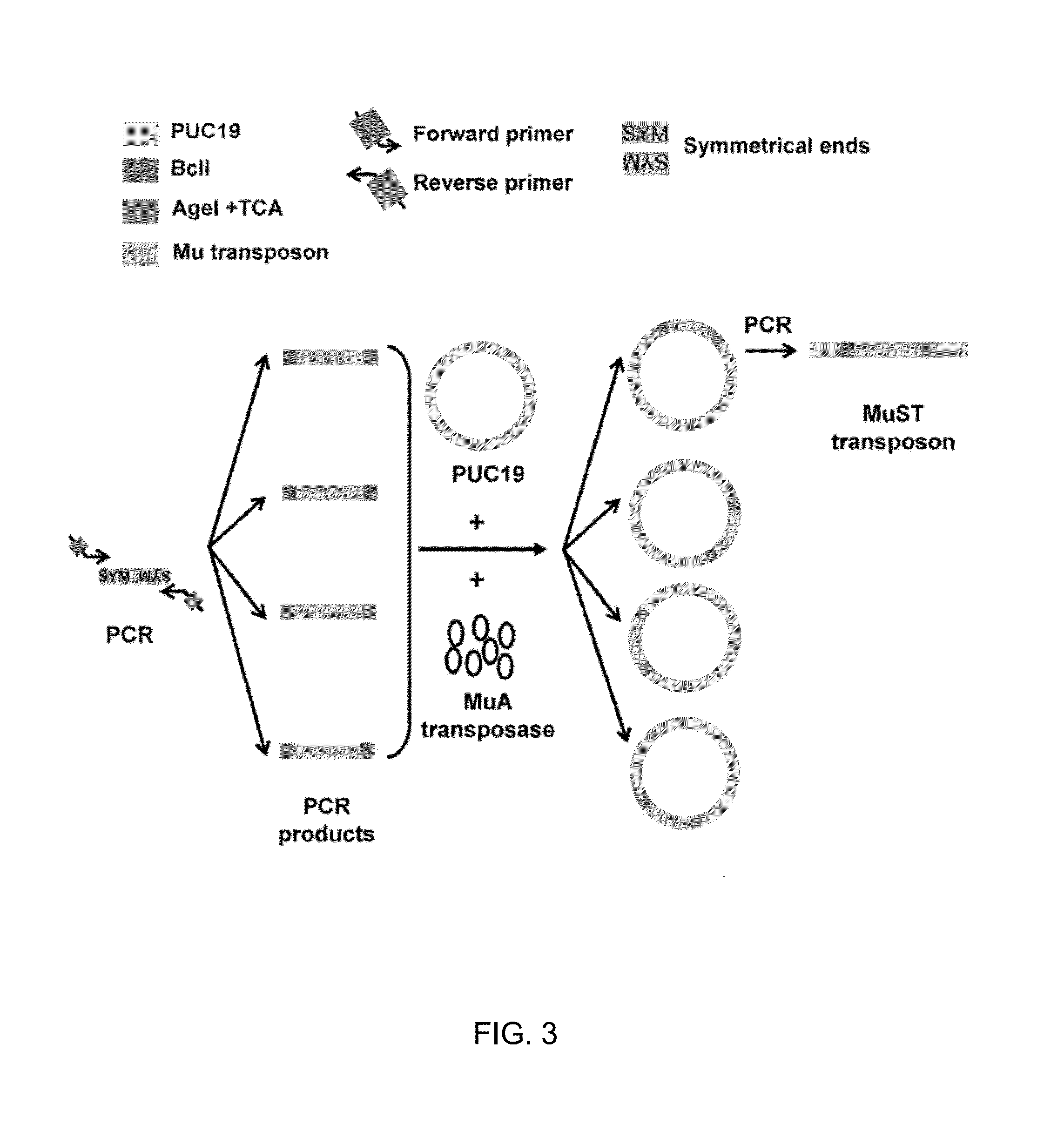Engineered transposon for facile construction of a random protein domain insertion library
a technology of random domains and transposons, applied in the field of random domain insertion library construction methods, can solve the problems of lowering library construction efficiency, inconvenient control of inter-domain linker residues, and no robust guideline for selecting insertion sites, so as to reduce library construction efficiency and avoid structural conflicts
- Summary
- Abstract
- Description
- Claims
- Application Information
AI Technical Summary
Benefits of technology
Problems solved by technology
Method used
Image
Examples
Embodiment Construction
[0026]Genetic Components Included in the MuST Transposon.
[0027]We created the engineered MuST transposon by including unique restriction enzyme sites at the 5′ and 3′ ends of the Mu transposon to enable optimization of inter-domain linker residues as well as sticky-end ligation between a host DNA fragment (i.e. bcx) and a guest DNA fragment (i.e., PUC19). For efficient selection of clones containing the randomly inserted MuST transposon, the chloramphenicol resistant (CmR) gene and other genetic components necessary for expression of this gene was included in the MuST transposon. The host plasmid PUC19 displays the ampicillin resistance (AmpR) but lacks CmR and, as such, only clones containing the MuST transposon inserted into PUC19 should be able to grow on Amp / Cm plates.
[0028]A schematic of construction of random domain insertion libraries using the MuST transposon is shown in FIGS. 1A and 2. Briefly, random transposition of the MuST transposon into the host plasmid PUC19 was allo...
PUM
| Property | Measurement | Unit |
|---|---|---|
| total volume | aaaaa | aaaaa |
| pH | aaaaa | aaaaa |
| length | aaaaa | aaaaa |
Abstract
Description
Claims
Application Information
 Login to View More
Login to View More - R&D Engineer
- R&D Manager
- IP Professional
- Industry Leading Data Capabilities
- Powerful AI technology
- Patent DNA Extraction
Browse by: Latest US Patents, China's latest patents, Technical Efficacy Thesaurus, Application Domain, Technology Topic, Popular Technical Reports.
© 2024 PatSnap. All rights reserved.Legal|Privacy policy|Modern Slavery Act Transparency Statement|Sitemap|About US| Contact US: help@patsnap.com










